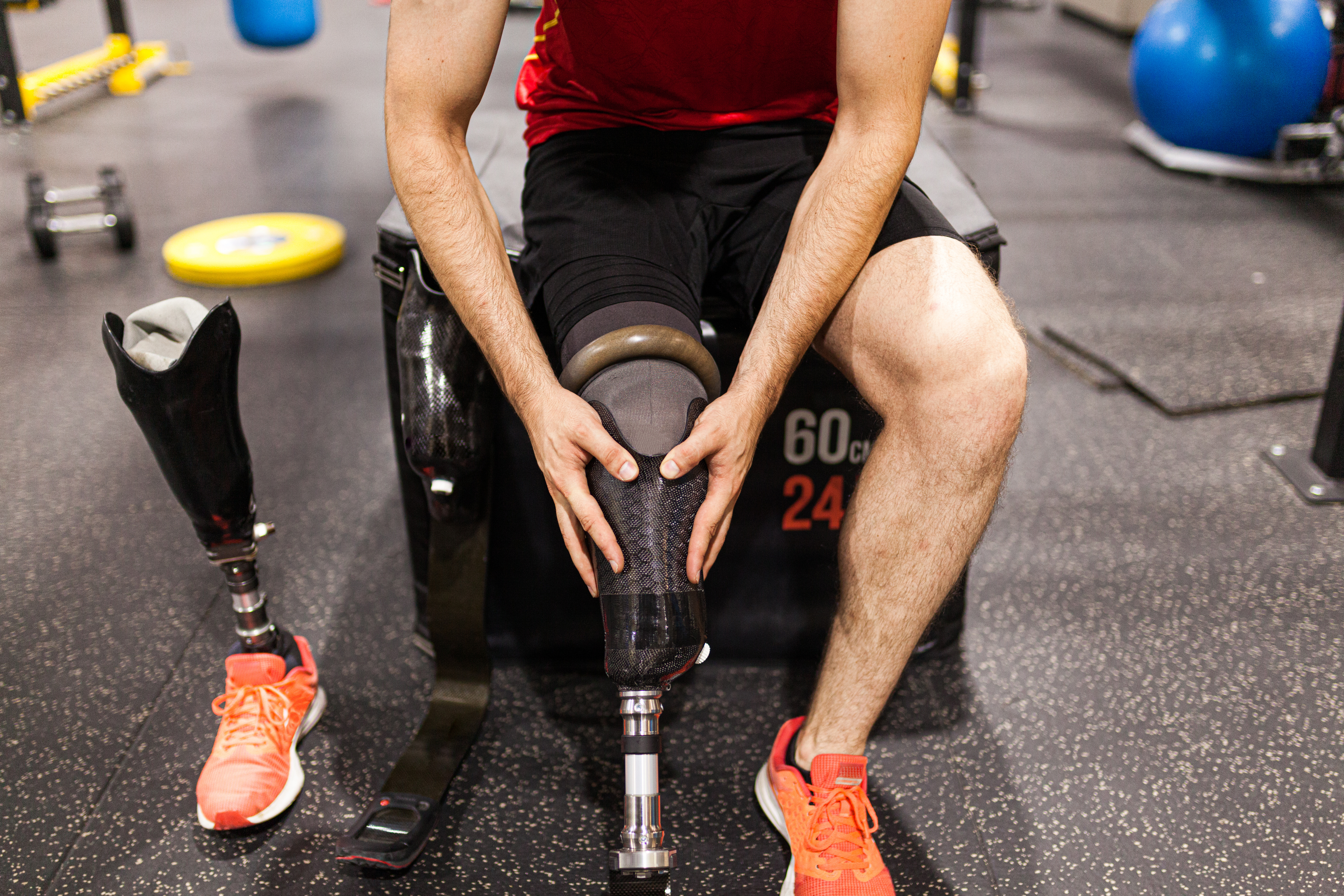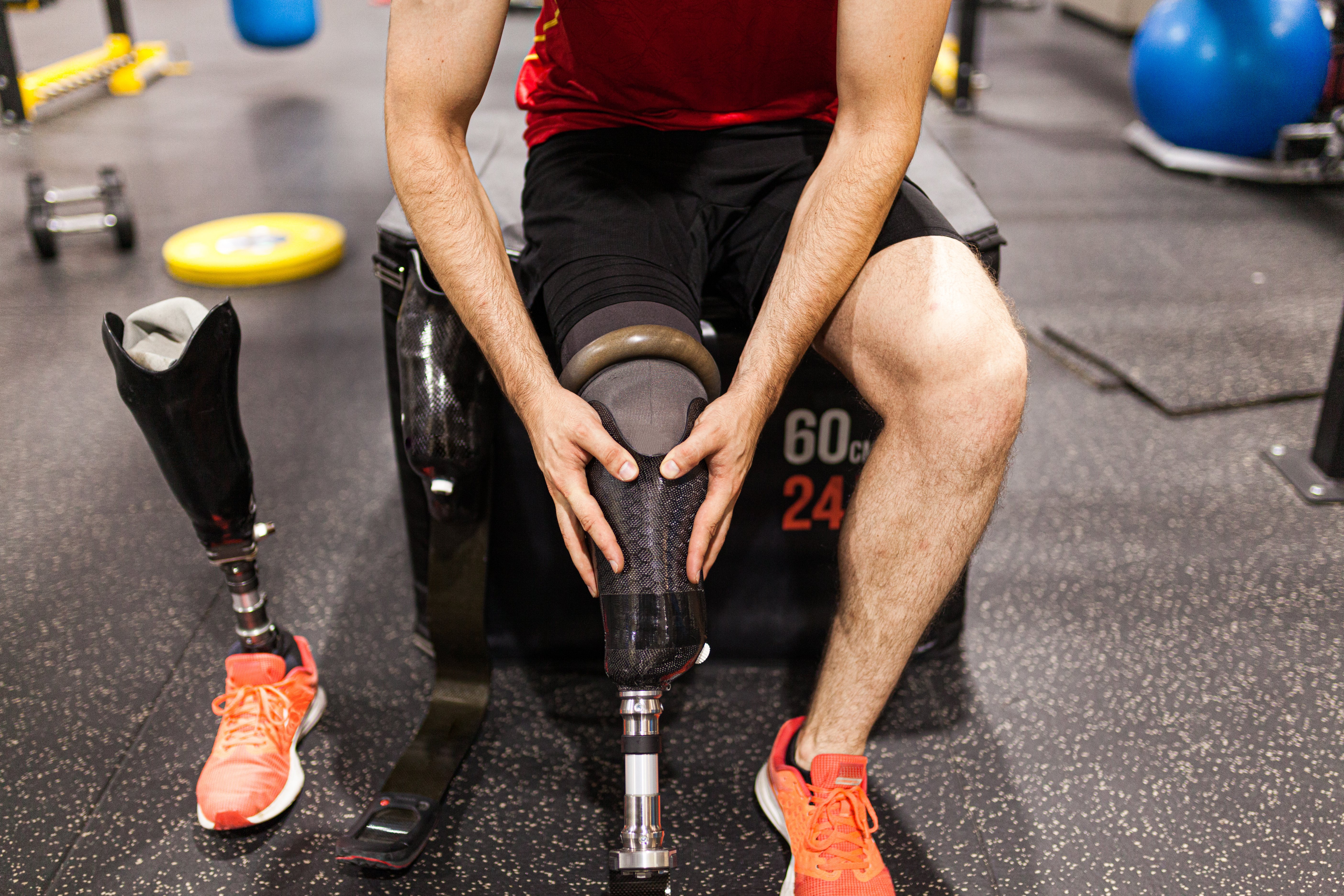Are you facing a transfemoral (above knee) amputation? This is a surgical procedure to remove the lower limb at or above the knee joint when that limb has been severely damaged via trauma, disease, or congenital defect.
After surgery, there will be many choices to make. Considering this information ahead of time can make the journey a little easier.
Things to Think About
Following an amputation, you should expect swelling for at least four weeks and regular appointments for your doctor to change dressing.
You may experience pain in your residual limb, or feeling where your limb was. This is called phantom pain. It can come and go for a year or longer. Talk to your physician about medications available for both types of pain.
Rehabilitation and exercise is a vital step in recovery. You may even start some mild activity while still in the hospital, such as lying on your stomach to prevent tightness in the hips. A rehab facility will provide the guidance needed to recondition your muscles as you relearn balance, coordination, and other activities. Rehab may be needed for a year or longer depending on your unique circumstances.
If you have chosen to be fitted for a prosthesis, your physician will help teach you how to care for your device. It is important to get used to and practice wearing your prosthetic device before returning to work and other activities. You should also become familiar with operating a wheelchair, crutches, or other devices for times you are not wearing your prosthesis. Consider any adjustments needed at home, in the car, and at work to accommodate these devices and make your mobility easier.
Self-care and emotional support play a large role in your rehabilitation. Having your leg amputated is traumatic. It is normal to experience frustration as you learn to live with new limitations. You may experience grief and depression. It is important to understand these feelings and to talk about it with family, friends, and health professionals. Check local support groups to connect with others who can relate to the changes you are experiencing.
After Your Amputation:
- Talk to your doctor about your physical activity. Using your remaining limb can help it heal faster.
- When your doctor says it is okay to shower, wash your remaining limb with mild soap and pat it dry. You may need help with this at first.
- Consider adaptations to your home or car to fit your particular situation.
- Return to work and usual routine when your remaining limb has healed (usually 4-8 weeks, but may take longer).
- It is common not to have regular bowel movements after surgery. Try to avoid constipation and straining by eating foods high in fiber. Consult your physician if you have not had a bowel movement in a few days.
- Talk to your doctor before you restart any medications. They will also go over any new medications needed. Be sure to follow all directions and only take medications as prescribed by your physician.
- Caring for your remaining limb will depend on your particular dressing and your doctor’s instructions. Check daily for irritation, skin breaks, and redness.
- Remember to remove your prosthesis before you go to sleep. Tell your doctor about any problems you may experience.
Every recovery is unique. Having an amputation is a big change, and there are tools and help in place to make living life to the fullest possible for you.
Let BioTech help answer questions about prosthetics and assist you with a pre-amputation consultation. Contact us today for more information.

